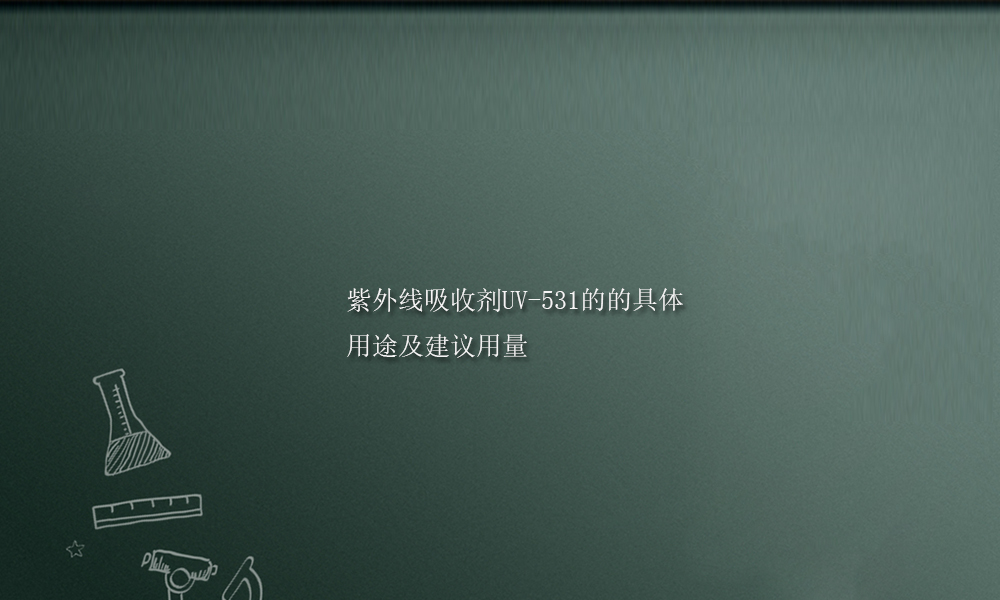
It is understood that UV absorber UV-531 is in the form of light yellow crystalline powder, insoluble in water, easily soluble in benzene, n-hexane, acetone, and slightly soluble in Ethanol is slightly soluble in dichloroethane, with a melting point of 47-50°C. It can absorb ultraviolet light of 240-340 nm. It has the characteristics of light color, no zero, good compatibility, low migration, and easy workmanship.
The specific uses and recommended dosage of UV absorber UV-531 are as follows:
UV absorber UV-531 is suitable for polyolefin and polyvinyl chloride and other materials, widely used in PE, PVC, PP, PS, PC, plexiglass, propylene fiber and ethyl vinyl acetate. It also provides good light for dry phenolic and acid varnishes, polyurethane coatings, acrylics, epoxy and other air drying products, as well as automotive refinishing paints, powder coatings, polyurethane coatings, rubber products, etc. stabilizing effect.
1. Polyethylene: Both high-density and low-density polyethylene are very effective:
Recommended dosage of polyethylene flat filament, monofilament, and film: 0.2-0.5%;
p>
Recommended dosage in low-voltage devices and blow molded products: 0.15-0.3%;
The effect is very good when used in agricultural films, which can extend the service life by 2-3 times. Recommended dosage: 0.5%.
2. Polypropylene: KINGSORB-531 is very effective in both colored and colorless polypropylene. The amount of UV absorber increases as the thickness of the product decreases.
Dosage of fiber, monofilament, plain yarn, ribbon, mesh and film: 0.5%; injection molding: 0.2-0.3%.
3. Polyvinyl chloride: Ordinary polyvinyl chloride, whether plasticized or non-plasticized, will turn yellow and change its physical properties under ultraviolet irradiation, especially plasticized PVC. Dark spots may also appear on the outside. The general addition amount is: soft PVC: 0.3-2%. Hard PVC: 0.3%.
4. For SBS and PS modified TPR materials, the general dosage is: 0.3%.
5. Others: Recommended dosage: 0.1-0.3%. Before use, a small test should be conducted to determine the final formula.

 微信扫一扫打赏
微信扫一扫打赏

